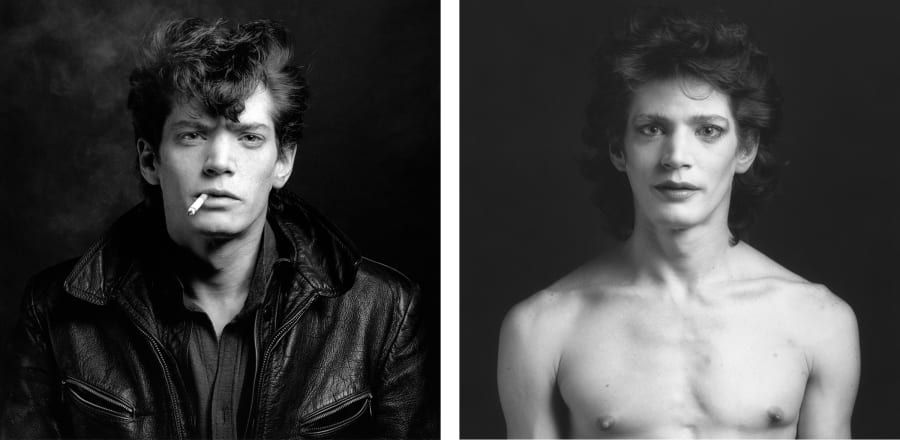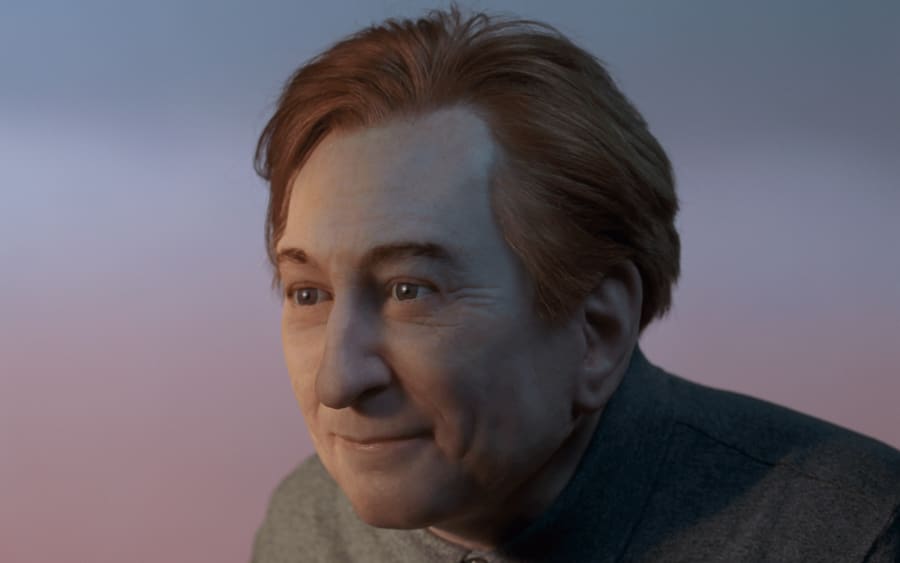Nathanaëlle Herbelin has just moved into a new studio, a stone’s throw from Père Lachaise cemetery in Paris and right by an art deco church that looks a bit like a spaceship. It has the same huge glass roof as her last studio behind Montmartre, and the same welcoming atmosphere. It’s as if she’s always been here. Her habits haven’t much changed since I first met her, when she was in her second year at the École des Beaux-Arts. She lives alongside half-finished paintings and small painted wooden panels, with familiar objects all around her. No, nothing has changed – apart from the large number of requests she gets, and the two people who are now helping her with admin, ahead of her exhibition opening in March at the Musée d’Orsay in Paris.
Herbelin was born in Tel Aviv in 1989 to an Israeli mother and a French father, a photographer, who often showed her pictures. At the beginning of her career, she was inspired by Diego Velázquez, John Singer Sargent, Sophie Calle, and David Hockney. After being taught painting techniques by a group of Russian artists, she went to Paris to study. It was a place that she had dreamed of, a city that was for her a wellspring of ideas. She left behind an art scene that felt too narrow, but her childhood growing up near the desert made a lasting impression, especially as she returned there during her years in the army. ‘I love the melting pot of Paris, because I can put everything I have found here freely onto canvas, but I always want to go back to the desert. It clears my mind and washes my eyes; it’s a moment of simplicity.’
These words are perhaps the best definition of her painting, so limpid that it’s almost magical. She depicts silent interiors, portraits, dogs, cats, and birds – objects that form landscapes. For a while she used photographs, but now she paints mainly from observation. ‘Looking into someone’s eyes for a long time is very physical. You need lots of adrenaline. I have to be able to feel the person in order to capture them.’ The title of her exhibition at Xavier Hufkens in Brussels in 2023, ‘Undivided Attention’, made reference to her need for absolute concentration. In an environment where we are constantly distracted, Herbelin is looking for a different way to experience the world. It’s a radical act: ‘Painting intimacy, that’s when we’re really ourselves,’ she explains.
About a decade ago, she started working with portraiture. How does she choose her models? Sometimes they’re acquaintances, painter friends, or neighbors, and other times they’re strangers met in the metro, chosen for their resemblance to a work of art, a Fayum mummy portrait from Roman Egypt, or a medieval character. The desire to capture these people, to understand them, goes hand-in-hand with the pleasure of painting them. That was how she began to paint her first nudes, driven by the desire to paint their skin. In her backgrounds, there are often curtains or flowery or striped quilts, trays full of glasses alongside small, mysterious objects. Her still lifes look like altars – the backgrounds are reminiscent of the works of Édouard Vuillard, Pierre Bonnard, and their fellow Les Nabis. They are sometimes harder to make out, like mental landscapes or colored impressions. In these silent scenes, small dramas play out through the expression of one person – a teenager’s coming out, a bath scene, the Eritrean neighbors at her mother’s house. The world’s complexity is revealed, for example, in a photograph pinned to the wall of two Orthodox rabbis in Tel Aviv.
Herbelin’s very small formats are some of her most powerful. She can take them around with her, paint on her lap, and scratch or scrape at them without harming the surface. They have the matte effect and delicate colors of frescos. The soft veil of light under which you can see the traces of brushstrokes is redolent of the French Symbolist, Eugène Carrière’s monochromatic paintings. Yet, over the past few years, she has perfected new ways of painting, using a calcium carbonate binding agent and rabbit-skin glue in order to recreate, on large canvases, effects close to those she was getting on wood. It’s a recipe that produces works as fragile as porcelain. Often, it’s the subjects themselves that determine the size of the frame, even if it means extending the canvas by a few centimeters if necessary. Some paintings, abandoned part way through, are reused and transformed, the ghosts of past work coming out of them like shadows. It’s Herbelin’s way of welcoming chance and happy accidents into her work. Other canvases sit for a long time in her studio, resisting her advances. Sometimes all it takes is a butterfly, added months later, to alter a composition, and balance it out. Whether she’s painting New York, Tel Aviv, or Beijing, it’s her characters who embody these increasingly indistinct locations.
A certain green sofa keeps cropping up. That’s where she often puts her models. The poses, gestures, and even what the model is wearing are decided in the moment. ‘I devour my subjects, drawing them directly with the paintbrush. Sometimes, if it doesn’t work, I quickly change the canvas.’ It’s a codified ritual. She often paints couples: her own relationship with her partner, or that of friends, entwined on a bed, or an embrace in the street. What makes a couple beautiful? There’s a mystical dimension to her work – in the shadows and reflections that fall on domestic scenes, like in religious paintings from the Renaissance, in the Portrait de ma grand-mère à son mariage/funérailles [‘Portrait of my grandmother at her wedding/funeral’], in her depiction of herself pregnant before she actually was, then, a few months later, with her daughter in her womb. The objects that she paints in small formats often look like the ex-votos that you can find in churches and archeological sites. For Nathanaëlle Herbelin, ghosts are made of matter.
Nathanaëlle Herbelin is represented by Galerie Jousse Entreprise (Paris) et Xavier Hufkens (Brussels).
‘Nathanaëlle Herbelin’
From March 12 to June 30, 2024
Musée d'Orsay, Paris
Anaël Pigeat is an art critic, editor-at-large of The Art Newspaper, journalist for Paris Match, and curator.
English translation: Catherine Bennett.
All photos by Marcelo Gomes for Art Basel.


